By economist, David Williams-Chen
As Australia heads towards a federal election, cost of living pressures are shaping up to be the number one issue for voters. With wage growth lagging, household budgets squeezed and economic growth stagnating in the private sector, policymakers are looking for levers to pull. One surprising and often overlooked candidate? Personal income tax.
While income tax might seem like just another line on a payslip, for millions of Australians, a quiet tax hike has been playing out year after year in the form of bracket creep, and it may be holding wage growth hostage.
The Slow Grind of Bracket Creep
While headlines are dominated by interest rates and inflation, creeping income taxes, caused by stagnant tax thresholds, have been quietly tightening their grip on Australian workers’ pay packets for more than a decade.
Bracket creep happens when inflation nudges workers into higher tax brackets, even if their real purchasing power hasn’t increased. Unlike many developed countries, Australia doesn’t automatically adjust tax brackets for inflation. This means more tax paid on income that hasn’t really grown, leaving less in people’s pockets and a drag on the broader economy. This over-reliance on income tax discourages work and hinders growth, with every $1 of income tax raised dragging the Australian economy back by 20 cents.
It’s a tax strategy by stealth, and it’s becoming a structural issue. Individual income tax makes up a staggering 50% of federal tax revenue in Australia, more than double the OECD average. Despite a three-stage tax cut package rolled out in 2018, 2020 and 2024 (and a minor ‘top up’ being announced in last week’s budget), the relief hasn’t been enough to offset 15 years of creeping tax hikes.
Without reform, Treasury modelling suggests that personal income tax will account for nearly 60% of the federal tax base by the 2060s. The pressure is building, not just for individuals, but for the economy at large.Last week’s budget confirmed we are again in deficit, with projections pointing to a decade of deficits ahead. The uncomfortable reality is that bracket creep is doing much of the heavy lifting to push the budget back towards surplus. In effect, we’ve become dependent on it to solve our budget woes — not by design, but by default.
What Does Income Tax Have to Do with Wage Growth?
A recent study by Max Risch, published in The Quarterly Journal of Economics, provides some timely insight. Analysing data from over 660,000 firms and 16 million workers in the U.S., Risch looked at what happened when top marginal tax rates were hiked under the 2012 American Taxpayer Relief Act (ATRA).
While higher income taxes on business owners didn’t reduce employment or productivity, they did lower employee wages. For every extra dollar in tax business owners had to pay, worker earnings dropped by 11–18 cents.
This suggests that at least part of the tax burden gets passed down the chain, not through layoffs or hiring freezes, but by quietly compressing wage growth.
While the U.S. and Australian tax systems differ, the broader mechanism is likely transferable. Prior Australian studies on company tax hikes have found similar effects demonstrating that higher taxes on businesses eventually hit workers’ wallets.
Why the Timing Matters
All of this matters more than ever because this bracket creep isn’t an abstract tax policy issue, it’s hitting households right now.
Research indicates that bracket creep has reduced household disposable income more than the rise in interest repayments. Yet it receives far less attention in public debate. The Coalition has made some noise about reducing the tax burden on small businesses, including a proposed $20,000 deduction for entertainment expenditure; they have not committed to lowering income taxes (and would reverse Labor’s minor ‘top up’ income tax cuts).
Meanwhile, the Teal independents are pushing to index income tax thresholds to inflation, a relatively simple change that would stop the creeping tax hikes in their tracks. It’s not as flashy as a big new tax cut, but it could have meaningful effects on take-home pay and, potentially, wage negotiations across the economy. It would also bring Australia in line with 17 other OECD countries, including the USA and Canada, that already adjust their thresholds for inflation.
Could Tax Cuts Actually Help Raise Wages?
So could income tax cuts actually help raise wages? If Risch’s findings hold in Australia, then yes, under the right conditions, lower taxes could support higher wages. Here’s how:
- Higher disposable incomes would leave workers with more money to spend or save, boosting household resilience and living standards.
- Stronger post-tax earnings for business owners could fuel reinvestment, innovation, or — crucially — better pay for staff.
- A clear path for earnings growth may encourage workers to pursue higher incomes without the fear of disproportionate tax penalties.
- Rebalancing the system would lessen the distortionary impact of bracket creep on the labour market and reward productivity.
The Political Trade-Off
Of course, there’s no free lunch. Fixing bracket creep will reduce revenue and Australia’s budget is already under pressure. That means the government would need to trim spending, raise revenue elsewhere, or both.
The Teal MP Allegra Spender is among the few pushing for serious tax reform. Spender is calling for a broader conversation about modernising Australia’s tax base so it’s less reliant on taxing work and more aligned with productivity and innovation. It’s an uncomfortable conversation. But it’s also an overdue one.
A Budget Band-Aid or a Real Fix?
The recent federal budget made a few nods to easing household pressure, but it’s more sizzle than sausage, and it largely sidesteps the core issue: structural tax reform.
Yes, there was a surprise tax cut, dropping the lowest marginal rate from 16% to 14% over two years at a cost of $17 billion. But for most workers, that adds up to just 70 cents a day. It’s a modest step in the right direction, given taxes are at record highs as a share of household income. Still, it does little to tackle bracket creep or meaningfully incentivise those we rely on to grow the economy, particularly business owners who take on risk, create jobs and drive wage growth.
Other budget measures, like scrapping non-compete clauses for some workers or introducing national licensing for electricians, may boost productivity and earnings in the long run, but they won’t move the needle on immediate cost-of-living pressures. Meanwhile, short-term sweeteners like energy bill rebates and student debt relief are more about political optics than lasting reform.
With a decade of deficits forecast, it’s clearer than ever that we need a serious conversation about rebalancing the tax mix. We rely far too heavily on taxing work, while overlooking smarter, more sustainable ways to drive productivity and lift wages.
A Smarter Tax System for a Fairer Economy
As voters head to the polls, they’ll be weighing up which party has a credible plan to improve their cost of living and boost the economy. Bracket creep might not be the catchiest campaign slogan, but its impact on wages, household income and economic growth is very real.
If we want a smarter, fairer and more productive economy, we need to talk about income tax. Not just whether it’s too high or too low, but how it works, who it affects, and what happens when it silently creeps higher.




























